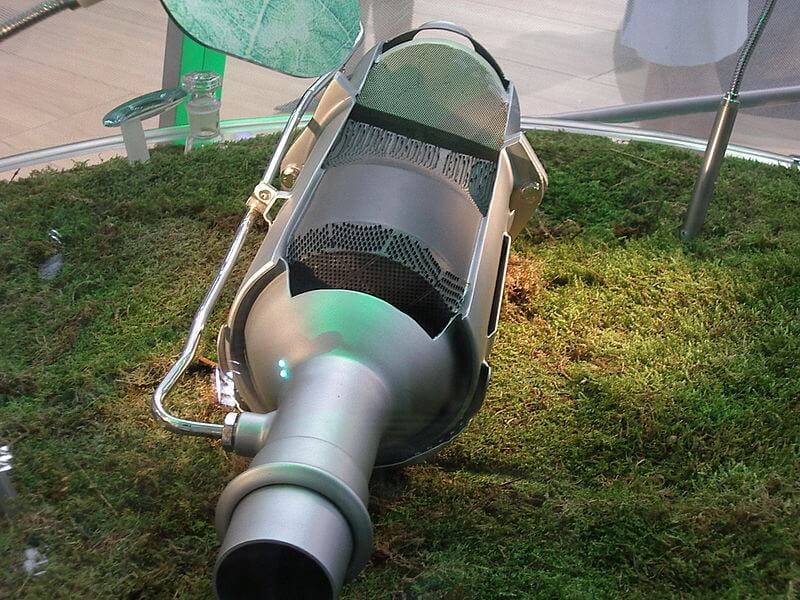Clogged EGR valve: Symptoms and how to solve it

What symptoms does a clogged EGR valve have, and how can you solve this problem? This question appears more often on various automotive forums, and we have decided to make it clear.
This article will focus on the symptoms of a clogged EGR valve and how to eliminate this problem. Before we do so, let's briefly clarify what the EGR valve is and what it is for.
Spis treści
What is an EGR valve?
The EGR abbreviation stands for Exhaust Gas Recirculation and is supposed to reduce the number of greenhouse gas emissions from the exhaust.

EGR valve: What happens if it doesn't work properly?
As the name implies, the task of the EGR valve is to send part of the exhaust gases back to the combustion chamber of the engine.
What is the EGR valve for?
The EGR valve opens and closes the connection between the intake and exhaust pipes. When the valve is opened, a certain amount of exhaust gas enters the intake manifold and mixes with the newly arriving fuel mixture into the cylinder. Simply put part of the exhaust gas goes through the combustion process twice.
Mixing the exhaust gases with the fuel mixture will cause the proportion of oxygen in the combustion chamber to be lower. Although this is undesirable in terms of performance, it will cause a decrease in the combustion temperature, which leads to a lower formation of nitrogen oxides.

European Emission Standards: What's their purpose?
High temperatures and excess air increase the production of nitrogen oxides in exhaust gases. A side effect of using EGR is faster engine heating.
How does EGR valve clogging occur?
The function of the EGR valve is to reduce the amount of oxygen in the combustion chamber, which also creates the problem of uneven mixing, which results in the increased formation of the number of solid particles.
This problem is tried to be eliminated by the particulate filter, which works with the single-circuit system of the EGR valve only from the point of view of the gases coming out of the vehicle. With this system, the exhaust gases are collected and recirculated before they pass through the catalytic converter and particulate filter.

Diesel Particulate Filter: What is it, and how does it work?
With a two-circuit system, the exhaust gases are collected after passing through the particulate filter, which means they are freed from soot. The exhaust fumes are, therefore, cleaner. Thus, the engine's wear and the intake pipe's clogging with carbon are significantly reduced. However, even this does not completely prevent the formation of solid particles.
Solid particles are also found inside the engine, either in the form of particles that get into the oil filling or in the form of particles that are gradually deposited on the walls of the intake manifold. Deposits on the walls of the intake manifold are created as a combination of oil vapors that are naturally found in the engine and solid particles from exhaust gases.
The increased formation of these deposits occurs primarily when you use the car for short drives below optimal operating temperatures but also when driving at very low engine speeds.
How to tell if the EGR valve is clogged?
Engine jerking during acceleration
Excessive smoke from the exhaust
Illuminated check engine warning light
Clogging of the diesel particulate filter occurs more quickly
The engine starts poorly
Increase in the production of nitrogen oxide and hydrocarbons
The engine chokes and has reduced power - This is due to a thick layer of carbon in the intake manifold resulting in not enough air that gets into the cylinders
So, how to prevent a clogged EGR valve? EGR valve maintenance is mainly based on cleaning and removing carbon deposits.
How to solve the problem with a clogged EGR valve?
If your vehicle has already been affected by one of the problems mentioned above, you have the following two options to choose from:
Replacing the EGR valve
Cleaning the EGR valve
1. Replacing the EGR valve
When replacing an old, clogged, or malfunctioning EGR with a new one, expect higher repair costs. This option is not the cheapest, so if the EGR valve can be cleaned up, you should choose this option.
2. Cleaning the EGR valve

Cleaning the EGR valve consists of disassembling the entire component, which is placed in an ultrasonic cleaner. It cleans all dirt and deposits from it using a special liquid.
Such cleaning is very gentle on the component, as there is no mechanical stress on the materials during it, and therefore no damage to the EGR valve.
However, you can also clean the valve yourself at home. You only need a few special cleaners to break down and remove carbon deposits. Under no circumstances should you clean the valve with a wire brush, knife, or screwdriver, as you could mechanically damage the valve.